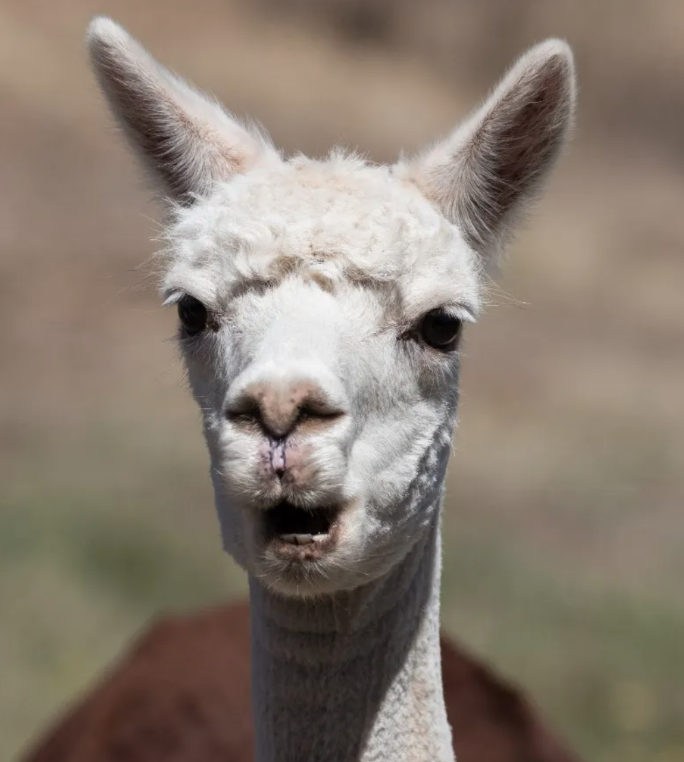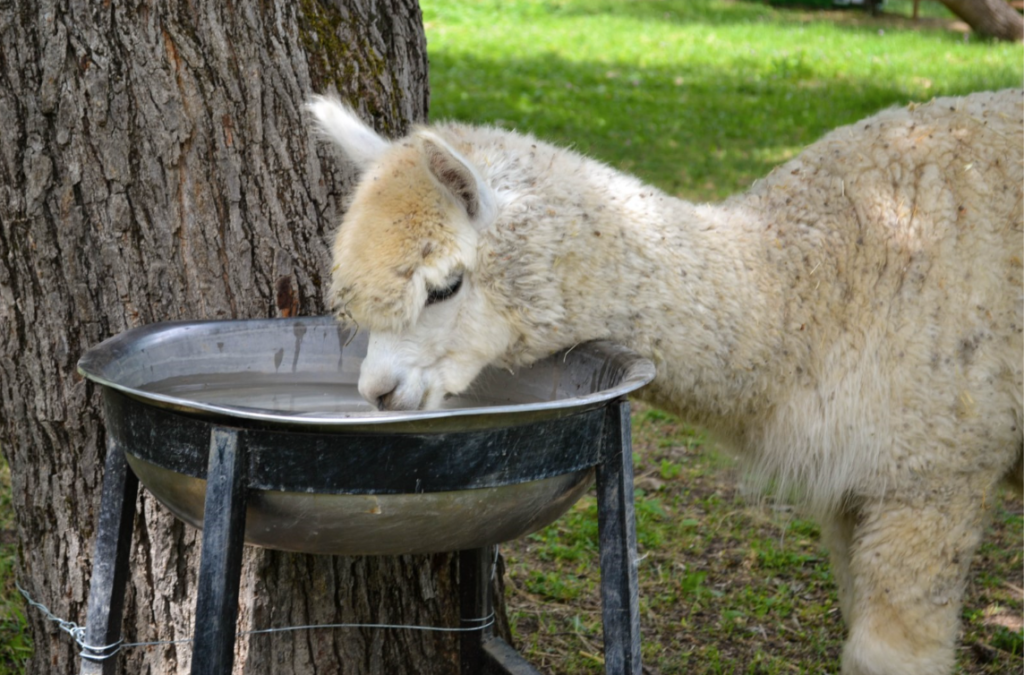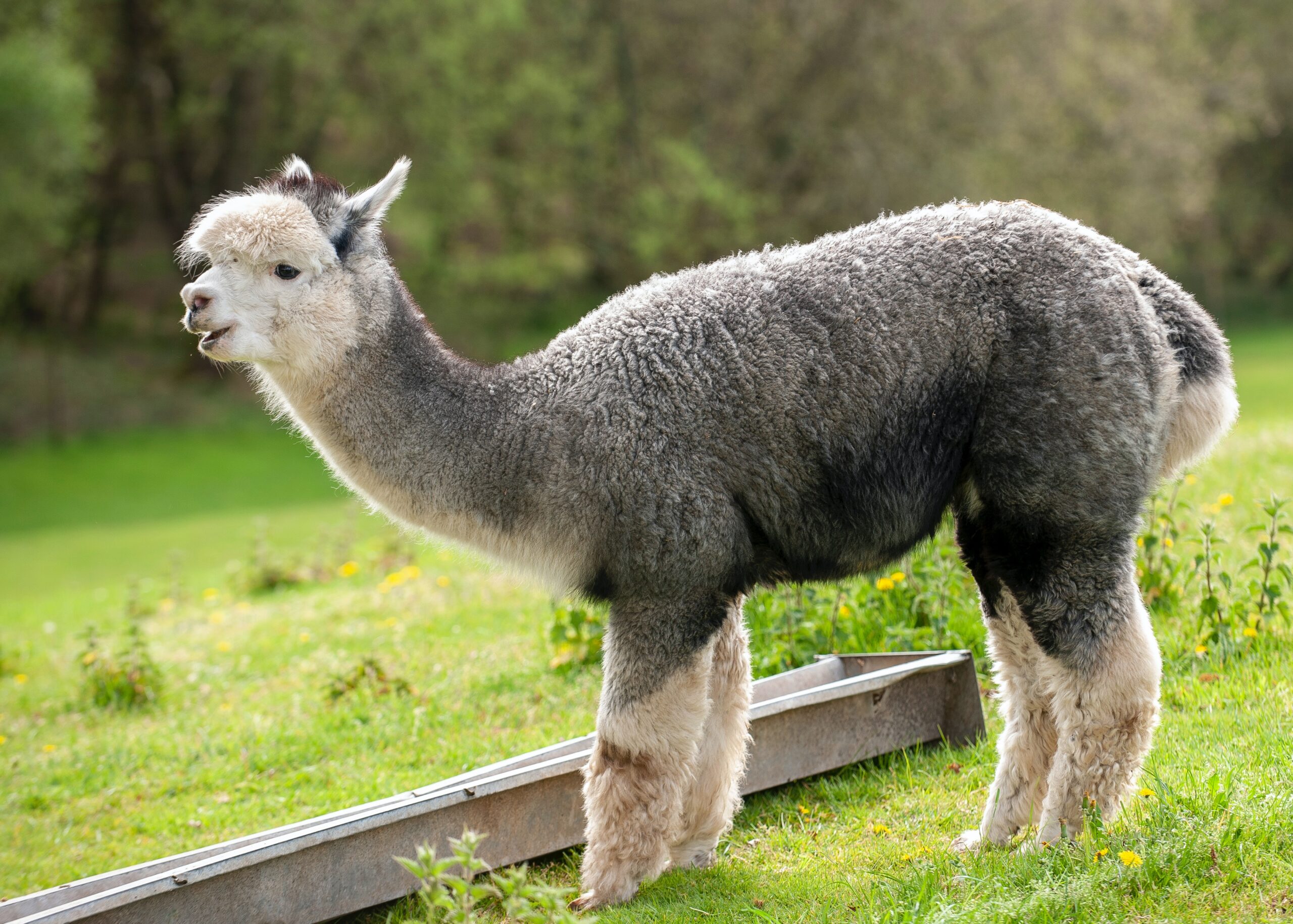Written by: Bria Osborne, OVC 2026
Edited by: Dr. Paisley Canning
What is heat stress?
Heat stress occurs when an animal’s internal temperature rises above normal levels due to high temperature and humidity in their environment. Heat stress is very dangerous to Alpacas and should not be taken lightly. Heat stress can lead to reproductive issues, overall bodily complications, and death.
When should I be worried about heat stress?
When determining if your alpacas are at risk of developing heat stress, it is important to take into account the ambient temperature as well as the percent humidity. The risk of heat stress increases with the ambient temperature as well as increased percent humidity.
The following formula is a helpful tool for knowing when heat stress should be a concern.
Temperature (in Fahrenheit) + % humidity
- If the number calculated is <120 your alpacas are generally not at a risk of heat stress.
- If the number calculated is 150 then you should use caution and make sure that your alpacas are not taking part in any extra activity. Your alpacas are at risk of heat stress.
- If the number calculated is >180 then your alpacas are in danger of heat stress and you should observe them closely.
What conditions put my alpacas at higher risk for heat stress?
While heat stress is primarily due to their environment’s temperature, there area number of factors that can contribute to heat stress in your alpaca such as:
- Alpacas in late gestation (pregnancy)
- Lactation
- Limited air circulation
- Improper diet
- Increased activity
- Fighting
- Breeding
- Weaning (when accompanied with fence pacing)
Signs associated with heat stress
Regular inspections of your alpacas will help you get comfortable with what is normal vs abnormal for your animals. Below is a list of signs that may be associated with heat stress. Your alpaca may experience any number of these signs.
- Elevated body temperature
- Usually greater than 105 degrees Fahrenheit
- Open mouth breathing (figure 1)
- Stiffness
- Uncoordinated movements
- Elevated heart rate
- Drooping of lower lip
- Laying down and reluctant to move
- Rim of drool, froth, or saliva around the lips
- Loss of appetite
- Scrotal edema (accumulation of fluid in scrotum) in intact males

Figure 1: Open mouth breathing is a sign of heat stress in alpacas.
Heat stress in breeding alpacas
Heat stress has many adverse consequences in alpacas used for breeding.
A pregnant alpaca may abort (miscarry) her cria , the cria may be born prematurely, as well potentially being born with congenital abnormalities. Heat is the most common cause of early births and congenital defects.
Unlike other species of mammals, intact male alpacas have their testicles located relatively close to their bodies. Having the testicles this close to the body increases the likelihood of the testicles overheating as they cannot dissipate heat as well as other mammals. Having the testicles overheat causes “heat sterility” meaning that the sperm have died off due to the heat and cannot impregnate a female alpaca.
What to do if you think your alpaca is under heat stress
If you think that your alpaca is in a state of heat stress, consider moving them (as calmly as possible) to an area with the best air circulation, set up a fan, and offer cool water. Contact your vet for instructions on how to proceed based on your observations. Your vet may give you instructions on giving electrolytes to your alpaca. Additionally, if your Alpaca is dealing with severe heat stress, your vet may have to place an IV and administer medications.
How to prevent heat stress
- Provide fresh, clean, and cool water (figure 2)
- Proper balanced nutrition
- Talk to your vet about providing supplements
- Proper air circulation
- Can put fans on the ground to allow for more air circulation
- During periods of heat, try to avoid using straw bedding (it holds heat)
- Shearing
- Shearing 2 to 3 weeks prior to heat indexes of 150 plus can help with prevention
- Maintaining Alpacas at proper body condition (obesity increases risk of heat stress)
- Breed in the spring when the weather is cooler
- Feed the highest quality forage you have during periods of heat
- High quality forage creates less heat during digestion

Figure 2: Providing fresh, clean, and cool water helps prevents heat stress.
Please contact Dr. Canning if you think your alpaca is in a state of heat stress or if you would like to further discuss preventative measures. You can contact the clinic at [email protected], or on facebook.com/upperthamesvs.
References:
Alpaca Veterinary Field Manual

